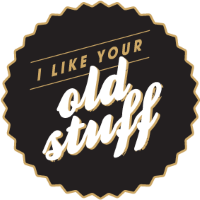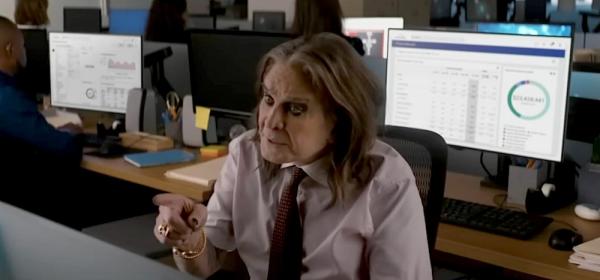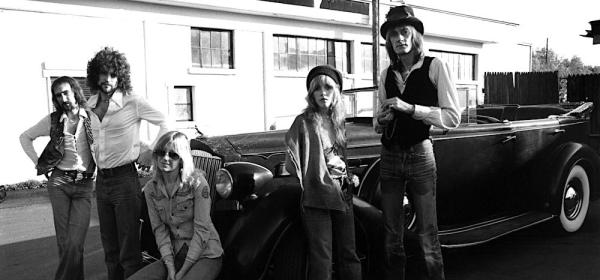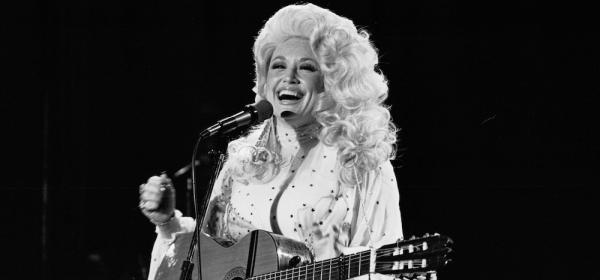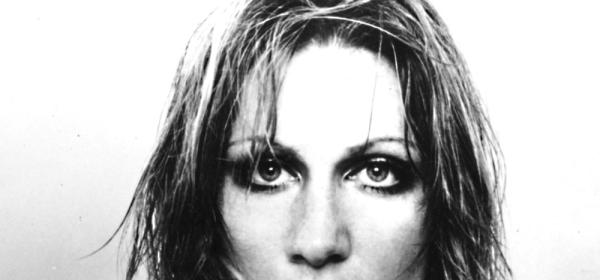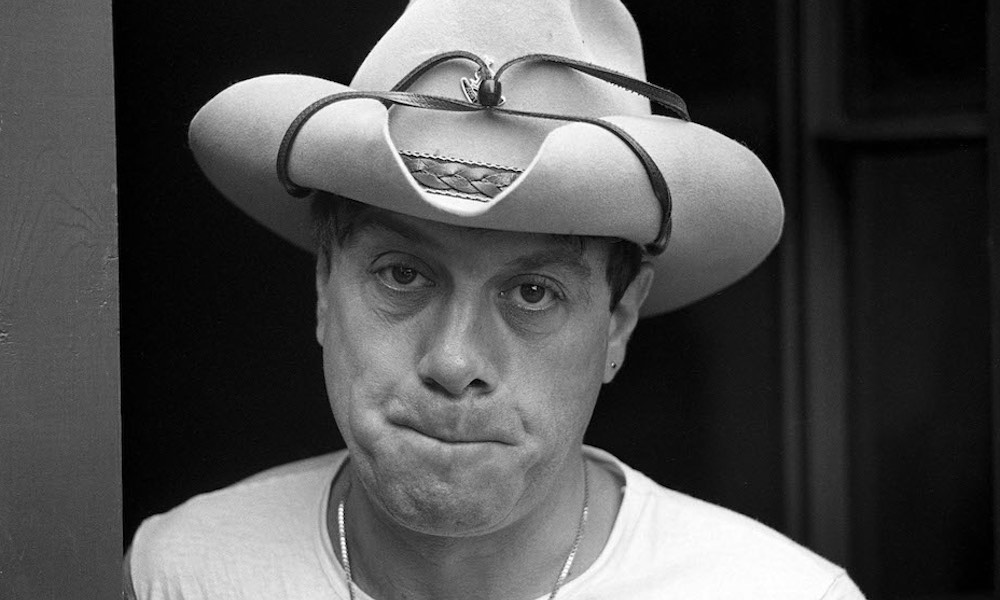
Since the birth of rock’n’roll and teenage culture in the ‘50s, each generation of young Australians has had its favourite home-grown pop music TV programs. In the ‘50s and ‘60s, national and local shows abounded –Six O’Clock Rock, Teen Scene, Kommotion and others rocked the country as a whole and the likes of The Go!! Show in Melbourne, and It’s All Happening in Sydney reflected and in turn inspired local scenes. Come the mid-‘70s, the most impactful music program the nation’s screens have even seen – Countdown – made its startling entrance.
In the first of a multi-part series covering multiple decades, we look back at the most significant Australian pop television programs from the ‘70s.
Bandstand (1958–1972 & Bandstand 76 in 1976)
A show that connected the ‘70s with earlier eras, Bandstand was the big daddy of pop programs from 1958 right through the ‘60s. Compared by the super square Brian Henderson, the Nine Network’s Bandstand played host to everyone in the ‘60s, from The Rolling Stones to Dusty Springfield to The Easybeats. Bandstand stayed in the middle of the road as things started getting hipper in the later ‘60s – that young fellow Johnny Farnham and Olivia were faves - and was something of an anachronism come the ‘70s. No surprises that it wound up in ’72; the age of Sunbury was upon us. There was a brief Bandstand revival in 1976 under the name Bandstand 76, with a young Daryl Somers getting his first show at evening television (Hey Hey It’s Saturday of course aired on Saturday mornings from its start in 1971 through to 1984), but it fared poorly. Recent years have seen the release of a vast amount of Bandstand footage on DVD.
Bandstand: John Farnham / Olivia Newton-John Anthology - 1968-71 Trailer
Bandstand 76: ABBA Interview
Happening '70 (also '71, '72) (1970–1972)
The ATV-0 (0-10) Network had been home to some of the best pop shows in the ‘60s, but like everyone, it struggled with the new sounds of the ‘70s. It focused on a lot of artists who’d been around for a while, like Johnny Young (who of course would soon be hosting Young Talent Time on the network), Johnny Farnham and Normie Rowe, and middle of the road groovers like the Town Criers and Issi Dye. Happening ‘70 was a replacement for the popular Uptight program, and had the same host in Ross D Wylie, fresh from his huge 1969 hit “The Star”. Zoot caused something of a commotion when they burned their pink outfits on camera during an appearance on the show in an attempt to get rid of their Think Pink teenybopper imager; this was of course at a time when we still only had b&w TV, so the point was probably lost on some. The very presentable Jeff Phillips hosted in ‘71 and ‘72, by which time Go-Set writer Ian “Molly” Melbourne had become a semi-regular.
Happening: Zoot - "Eleanor Rigby" (1971)
Happening: Molly Meldrum (1971)
Happening: Colleen Hewett - "Day By Day" (1972)
Hit Scene (1969-1972)
Over at the ABC, things were even squarer, if the look of Hit Scene presenter Dick Williams was anything to go by. But Dick was something of a Trojan Horse to fool the oldies: the show would feature the coolest of underground stuff like Tamam Shud, Country Radio and Blackfeather performing live, alongside all the significant artists of the era, like Zoot, Russell Morris, Jeff St John, Doug Parkinson and Colleen Hewett. Significantly, they would also present interviews with touring artists – Ian Anderson from Jethro Tull and Ray Davies from the Kinks are just a couple of the important figures whose presence in Australia were captured for posterity. Hit Scene even found time for Kamahl and Matt Flinders, perhaps to make Dick Williams look a bit cooler. The 30-minute show was aired from 1969 until the end of 1972 and was screened at different times, usually on Saturday or Sunday afternoons, in between sporting events. Hit Scene also broadcast the occasional concert at prime time, including a farewell Australian concert of Max Merritt and the Meteors before their first American tour in 1970.
Hit Scene: Russell Morris - "Sweet Sweet Love" (1971)
Hit Scene: Country Radio - “Gypsy Queen” (1972)
GTK (1969-1975)
Also from the ABC was GTK, which stood for 'Get To Know'. GTK was more a segment than a show; it was 10 minutes long and screened four nights a week before the Seven O’Clock News. It clocked up over 1000 episodes. The show didn’t have a host and broke new ground in other ways too, capturing some fantastic live performances and interviews for posterity. A shortlist of performances includes Lobby Loyde with both The Wild Cherries and The Coloured Balls, Daddy Cool, Spectrum, Madder Lake, Aztecs and Masters Apprentices; and the list of interviews includes the likes of Pink Floyd and Lou Reed. GTK had decent innings, was much loved, and fortunately, copies of a lot of material have been found in the ABC Archives after being long thought lost.
GTK: Coloured Balls - “Working Man's Boogie” (1972)
GTK: Lou Reed Meets the Press (1974)
Countdown
It probably wouldn’t be wrong to say that the modern Australian music industry began in 1975, with the introduction of colour TV. And the rise of Countdown. Suddenly music seemed more... colourful. Although it debuted in late ’74, Countdown was shot in colour from the start – its producers knew what was coming – and its appearance coincided roughly with that of the most colourful band Australia had ever seen, Skyhooks. Skyhooks were Melbourne based, as was Molly Meldrum’s mate, Michael Gudinski’s Mushroom label, and with Countdown being shot at the ABC’s Melbourne studios in Ripponlea every week, Melbourne all of a sudden became much more important on the national pop scene. Countdown was a game-changer for the local industry, and its influence was soon international, as Australia became the first country in which numerous artists – from ABBA to Madonna – first broke. All thanks to Countdown’s support. The era of the film clip was in full swing.
Countdown: Skyhooks - “Living in the 70s”
Sounds Unlimited/Sounds (1975-1987), and After Dark (1982 to 1985)
Channel 7 introduced its own ambitious new pop program not long after the ABC did theirs. Sounds Unlimited, soon to be simply Sounds, ran for 3 hours on a Saturday morning (after starting at 2) and was packed with film clips, and live interviews, often with touring artists who hadn’t slept since Friday night’s gig. It was a wild and woolly mix, encouraged by host Donnie Sutherland’s relaxed approach and enthusiasm. Three hours a week meant three times as much content as Countdown, and the program became particularly important for local bands who couldn’t get a nod from Countdown; an importance not lost on Midnight Oil, who refused to appear on Molly’s show but loved to chat to Donnie. From 1982 to 1985 Sydney got an extra dose of Donnie, with the late-night program After Dark, which provided a bit more focussed attention on Sydney’s then-thriving live scene. Sounds dominated the Saturday morning market and lasted almost exactly as long as Countdown, winding up at the end of 1987, half a year after Countdown did.
Countdown: Skyhooks - "Living in the 70s"
Flashez (1976-77)
The success of Countdown, the demise of GTK, and the impact of its youth radio station in Sydney, Double J, prompted the ABC to come up with another nightly youth-oriented program. Like GTK, Flashez was less overtly pop-oriented (despite host Ray Burgess having been a Countdown favourite), and it aimed itself at a slightly hipper audience as Double J did. Airing at 4:30 every afternoon, Flashez was great afterschool viewing and gave valuable exposure to cutting edge artists like The Saints and Radio Birdman, while at the same time covering Sherbet, Mark Holden and a whole host of others. It was also aware of the significance of youth culture in the media and didn’t play down to its audience; it featured current affairs type features on RAM magazine and Double J itself, and a teen advice segment called Dear Suzy, and fabulous hippy-type Mike Meade doing music reviews. Sadly Flashez only lasted a couple of years – 1976 and 1977 – but it was there when we needed it.
Flashez: Sherbet Fans Interviewed (1977)
Flashez: Kate Kitzpatrick interviewing The Saints (1977)
Rockturnal (1978)
Rockturnal was the television adaption of a popular album-oriented rock program on ABC Radio. It featured a lot of filmed live performances, including material from Radio Birdman in Adelaide that still shows up on Rage regularly. Other artists filmed included a young Cold Chisel, Richard Clapton, Sports (before they had an album out!), Stiletto (featuring Jane Clifton – again before they had an album out), Dave Warner’s From the Suburbs and Jo Jo Zep & The Falcons. The series was a simple but effective way of presenting the music – reminiscent in some ways to the BBC’s Old Grey Whistle Test (right down to the softly spoken and bearded presenter, whose Radio Birdman knitwear was a sight to behold). It’s a shame there hasn’t always been a program like this to document the live scene. We’ll give you a few from Rockturnal because this stuff is special.
Rockturnal: Radio Birdman - Live at the Marryatville Hotel (1977)
Rockturnal: Dave Warner's From The Suburbs - “The Yellow In Me”
Rockturnal: Stiv Bators - “It's Cold Outside” (1979)
Rockturnal: Stiletto - “Nuclear War” (1978)
Rockturnal: Cold Chisel- “Daskarzine”
Nightmoves (1977–1986)
Nightmoves provided the FM to Countdown’s AM – it was no coincidence that when Melbourne’s first FM rock station EON-FM started up a couple of years later, Nightmove’s host Lee Simon was one of its leading players. Starting on Channel 7 in 1977 and then moving to Ten, Nightmoves, which took its name from the Bob Seger song, was ‘70s late-night FM cool personified. It regularly played what was assumedly the only Springsteen footage available at the time – a live clip for “Rosalita” - and with backing from Michael Gudinski, it was hugely supportive of local artists at a time that the pub scene was really taking off. Overseas touring artists were interviewed, numerous local acts were filmed live in performance, and the program hosted two concerts at the Palais Theatre in Melbourne that resulted in two live albums on Mushroom. It also filmed the Andrew Durrant Memorial Concert – a tribute to the young guitarist from Stars who had died of cancer, featuring the likes of Brod Smith, Richard Clapton and various Chisels – and gave it extensive airtime. Long-lasting, Nightmoves sadly finished up a year or so before both Countdown and Sounds.
Nightmoves: The Ferrets - “Dreams Of A Love” / Interview / “Bye Bye Baby” (1977)
Nightmoves: The Sports - “Modern Don Juan” (1978)
Nightmoves: Jo Jo Zep & The Falcons - “Honeydripper” / “Show Ya Fun” (1978)
Nightmoves: Broderick Smith - “Ocean Deep “(Andrew Durant Memorial Concert)
Stay tuned for Part 2 – the ‘80s – coming soon.
Listen to our Hits Of The 70s playlist in Spotify:
